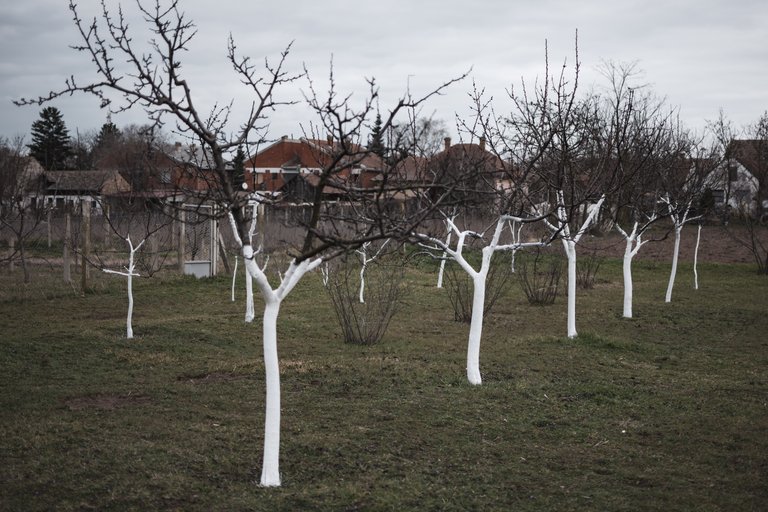
Today was a day for disinfection and "bandaging", there are no doubts winter is almost over, even tho mornings are still pinching our cheeks. Weather was more than great, windy sunny and partially cloudy.
Lately announced mostly doesn't match with current, not sure where the problem is but I got few sudden rainfalls when I last needed them.
I stared in the sky constantly as it was moody, literally PMS-ing, but without any tears.
Chalk, or lime.
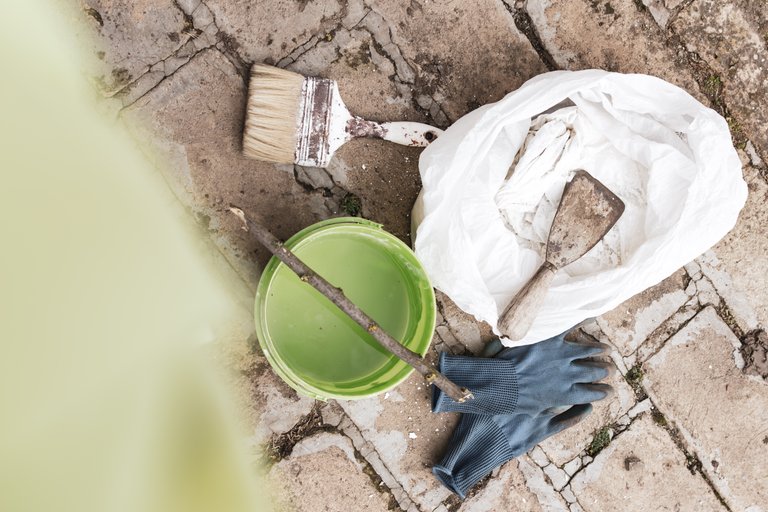
How do you maintain your Orchard, do you strive to use pesticide protectors that comes in tubes or still aiming for alternative?
Each of us had this material in our hands at least once, remembering the school days end endless doodling all over the school board using it?
Cleaning it was less fun, however there are two kinds of chalk, at least they are the most familiar to me, it can be slaked, or it can be dry, like powder.
Previously, in my area, every house had its own pit with slaked lime, in addition to being used in the orchard, lime was also used for painting the walls. The pit looked like a small pool, it was deep, on the bottom was chalk almost divided from water that was covering it, until it's time for using.
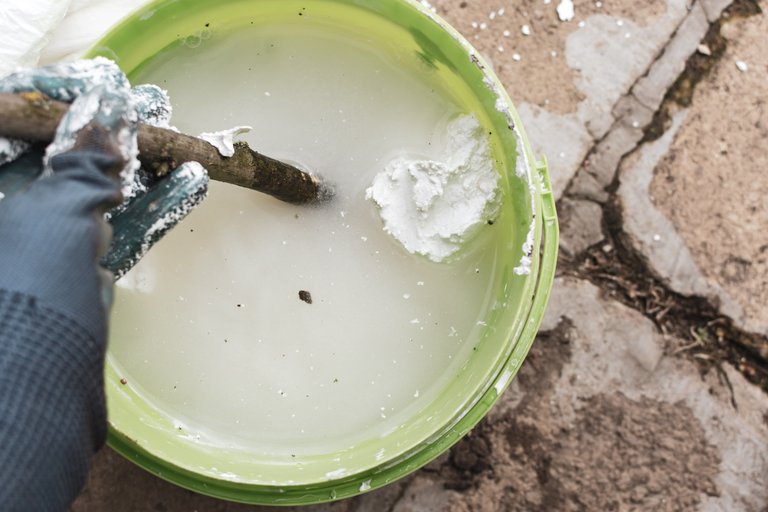
If you don't have a suitable tool, get ready for a long mixing.
What role does lime have with fruits?
Balm, so to speak. Lime is a balm for the bark! This was one of my favorite parts of tending the orchard.
Painting is done in autumn or spring, and you can do it both times, it won't hurt anything. Due to rainfall, lime is washed off the trees over time and then the process shall be repeated.
Benefits it has:
- Disinfection (during the winter, when all insects are looking for shelter and food, young fruit branches are the perfect place to gnaw on, which ofc bothers the tree and can cause the branch to die and fall off completely), autumn painting for the early prevention.
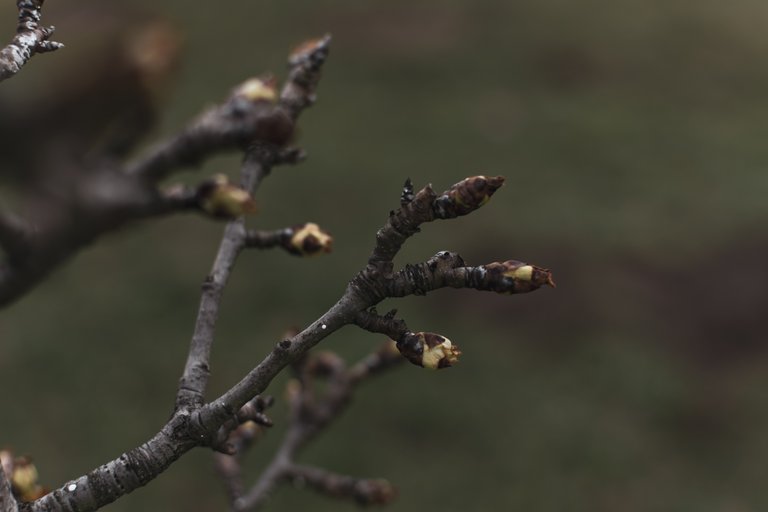
Lichens are by no means good tenants, they make the bark thick and dry, it becomes brittle over time and thus huge cracks appear on the branches and trees, complete vulnerability. It is actually a mix of algae and fungus.That dry layer that lichens form, drains the plant, even though they grow very slowly, they are a real buggers. Chalk will stop them and dump off.
Bark healing, wood functions like the human body, reacts to heat as well as cold, shrinks and expands. At high temperatures, the bark of the tree cracks, by chalking those holes and cracks can be protected until a new protective layer of the bark is formed. Chalk is white, and white color rejects the sun's rays.
Protection from rodents., when the winter lasts, everyone goes in search of food, so the bark is the target of rabbits, roe deer, goats and everything that likes crispy things. Unfortunately chalk isn't the dream spice, therefore isn't yummy at all for the many of food searchers.
Nothing to do with benefits, it looks tidy and nice, especially when the fruits spread their canopies.In our orchard, you can find plums, quinces, quinces, cherries, hazelnuts, pears, choke-berries.
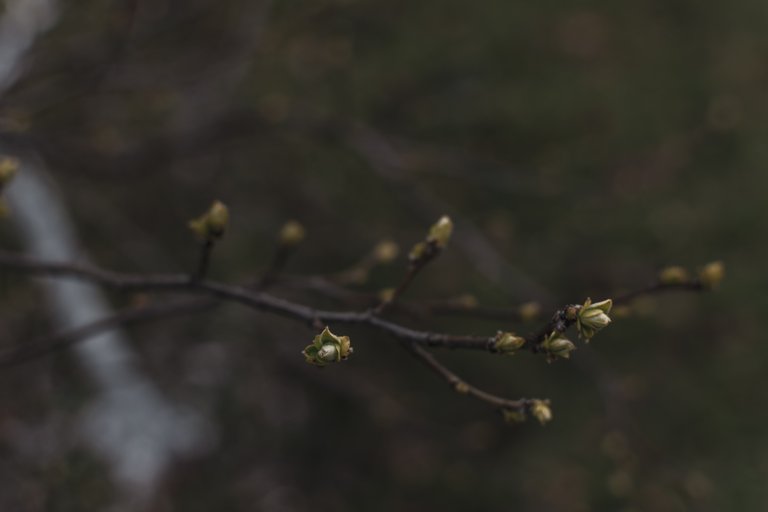
Leaves bud daily.
What do you need?
Bucket, brush, gloves and good will!
Next to it, this is recipe I found all over, everywhere is the same and I left out everything except for the quicklime and water.
5 kg of quicklime
250g of sulfur
Approximately 25 liters of water for applying with a brush, 100 liters for spraying with an atomizer/sprayer
If quicklime is used, 1 kg of quicklime is first slaked in 3 liters of water.
I don't like the smell of sulfur, which additionally supports disinfection, and salt adds to the density. I adjusted the thick homogeneous mixture myself, based on how much trace remains on the bark after application.
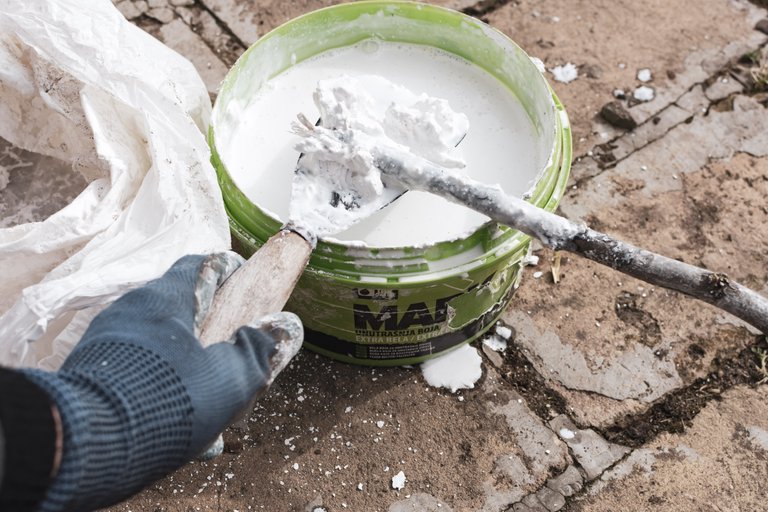
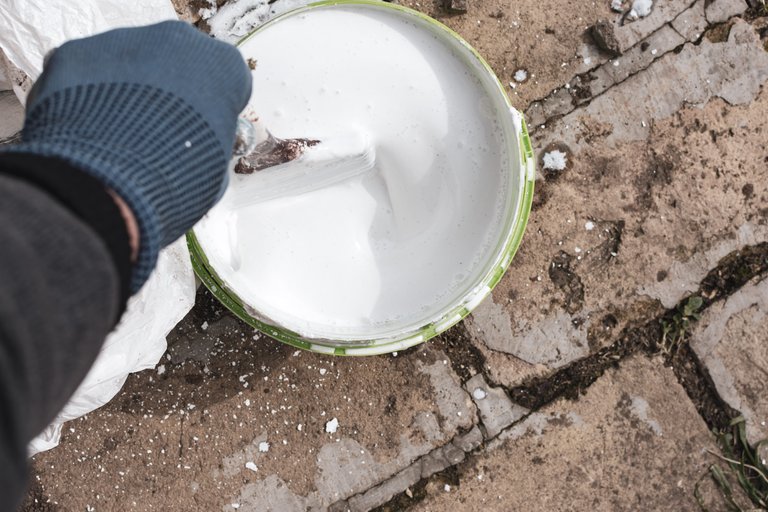
You should see a trace during mixing, in case the mixture is too thin - it won't stay on the crust, and it will leak everywhere.
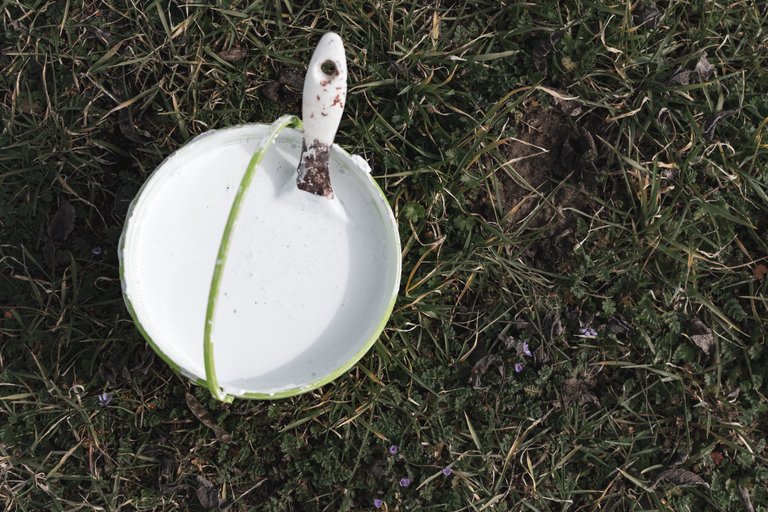
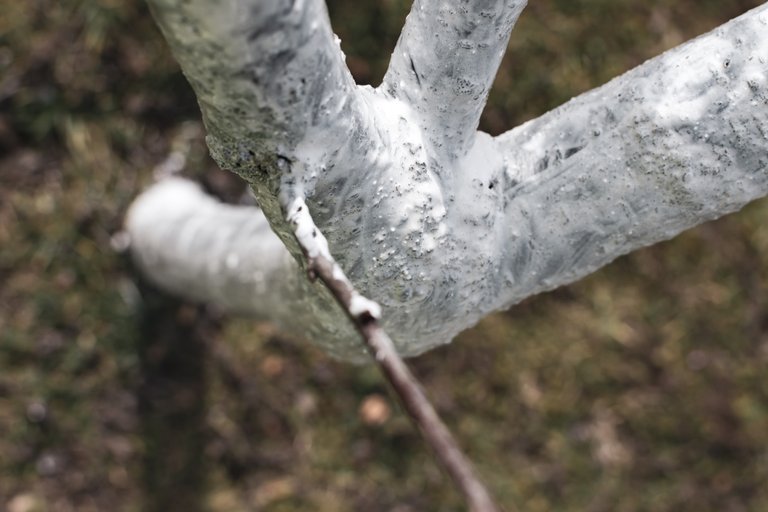
How to paint trees?
Start from the top with the first thick branches from which the saplings spread further, so to speak, the "main branches" that carry the canopy, descending towards the trunk to the very bottom.
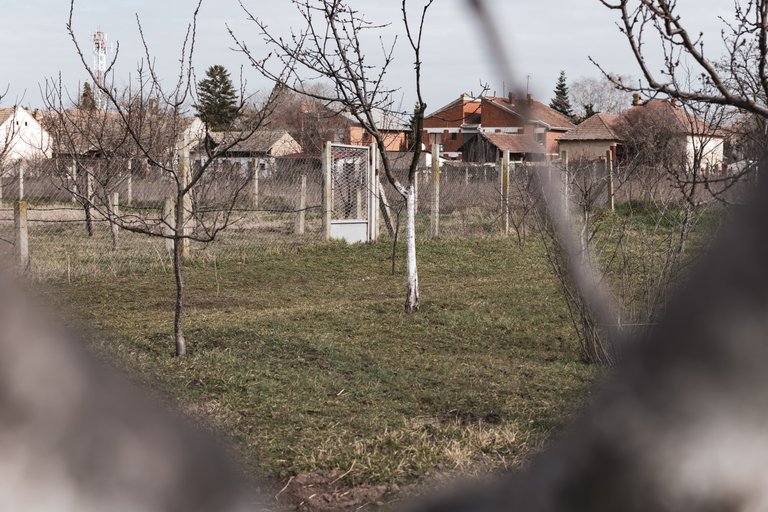
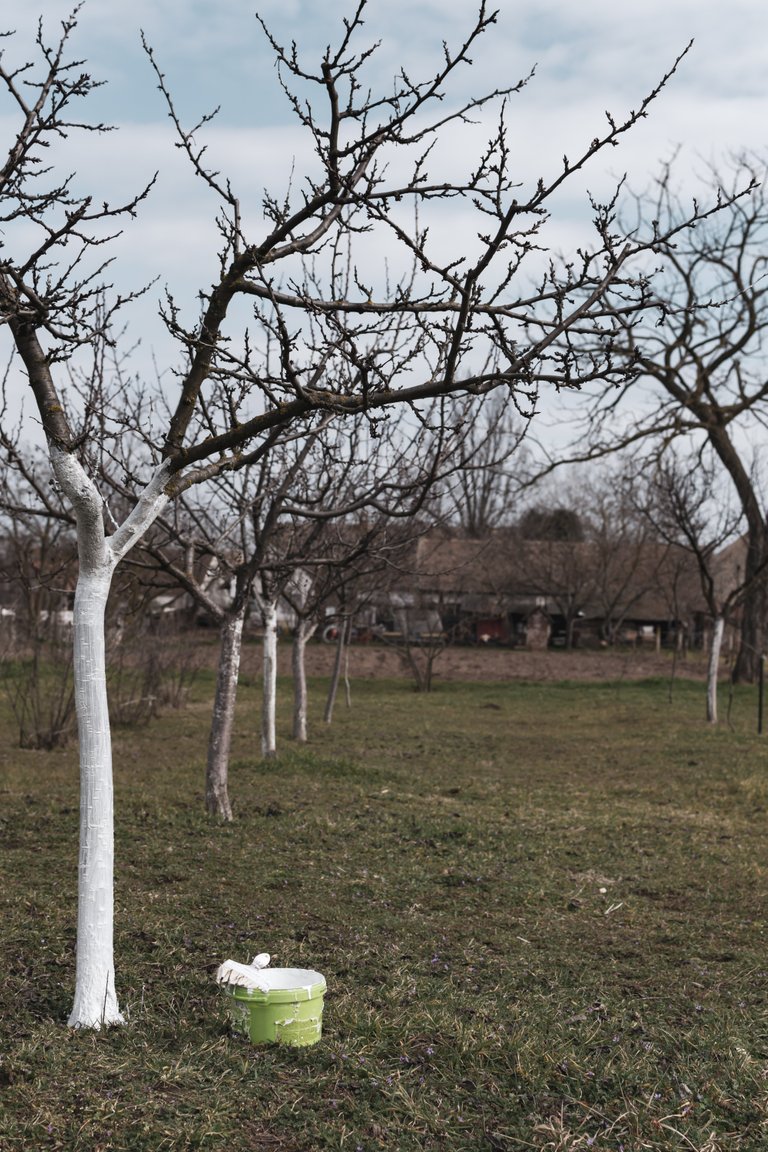
I had already stained the camera enough, so the picturesque presentation was soon finished, framing the final result was a real pleasure.
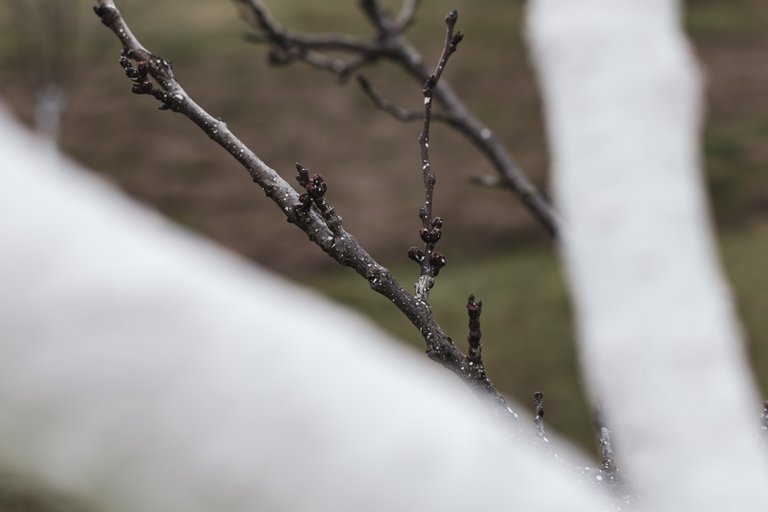
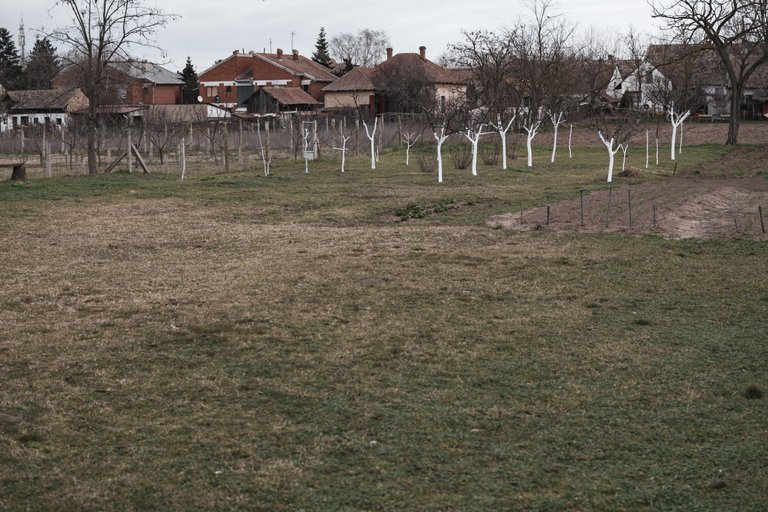
About twenty trees shine like new, all cracks have been repaired, ants have been prevented. They are one of the worst pests when the fruit ripening begins, lime significantly prevents them from crawling everywhere, they will still have to wait for the fruit to come to them, when ripen.

This nearby bench will serve us as a resting spot in the future, we still need a table and a roof that will protect us from the sun. It gives nice view on garden and orchard.
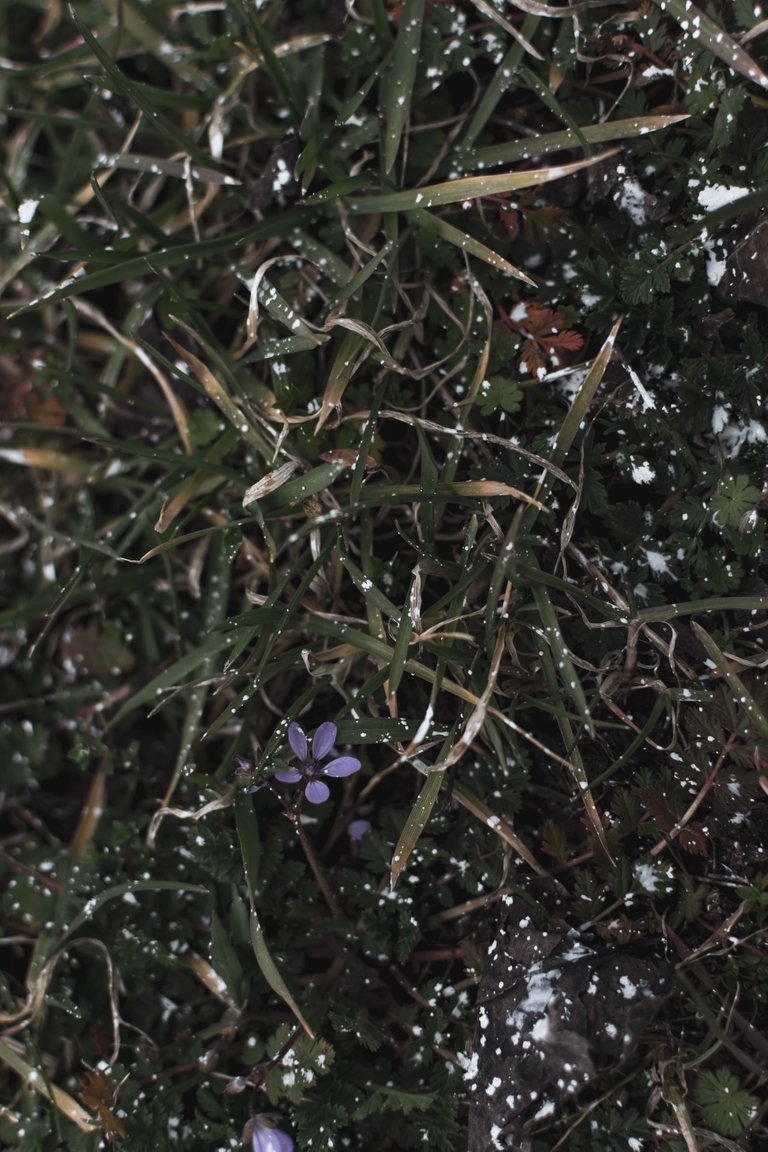
Oopsie, sprinkled.

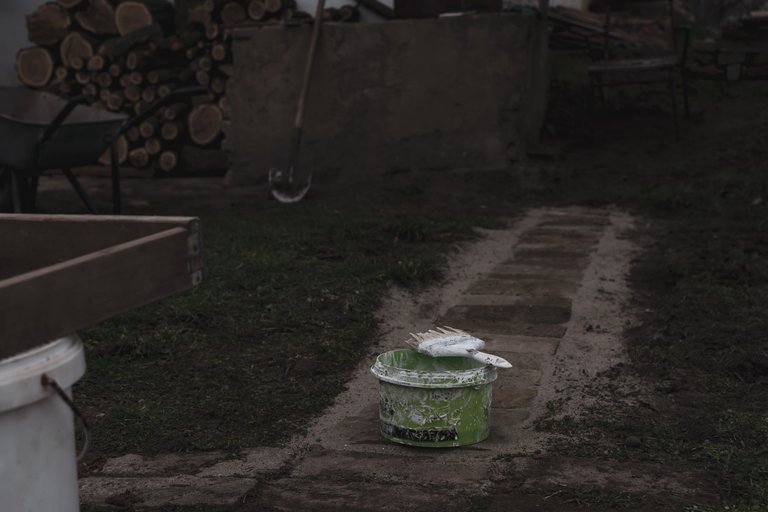
And this is another news that happened while I was playing with the chalk!
Soon, I plan to start planting flowers, bushes, medicine plants and greens all over the yard. So far, having some wonderful roses in front of the house, that needs to be replanted.
Dear darling is building brick path, which at the same time borders the new rose garden and leads us past the future multi-purpose fireplace under the large hazelnut tree to the future corner for summer enjoyment."
The third month of homesteading.
Tomorrow I'm going to buy new seeds!
I have really learnt a good lesson of protecting orchard plant by painting. That's very good job.
Glad to read that, thanks for stopping by! :)
OHHHHHH that's why they are painted white! I was puzzled, it's not somethign we do here! Bookmarking for future reference!
Hahha, yes some might think it's only from aesthetic reasons, and actually has a wide range of applications.
Happy to share and help (:
I guess I never thought about it!
Preparing fruit trees for winter.
dinosaur game
Just don't start painting the roses, then we'll know for sure you've gone mad as a hatter.
Gorgeous landscape painting!
Um, I had that idea with orchard next year, to paint each trunk in the color of fruits 😅
Still not late to proclaim me as mad :P
Better mad than angry!